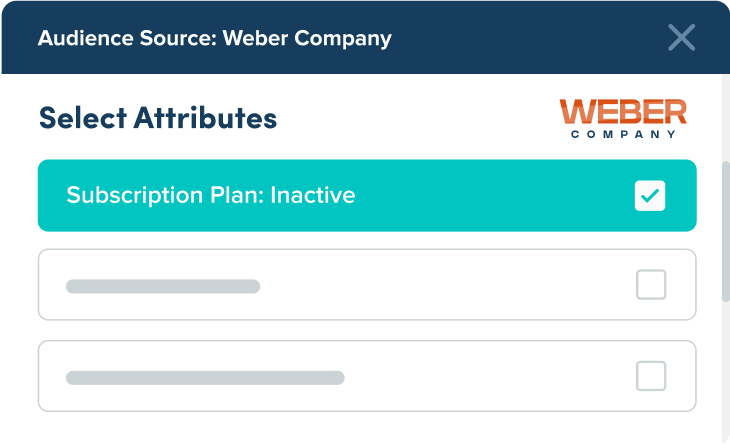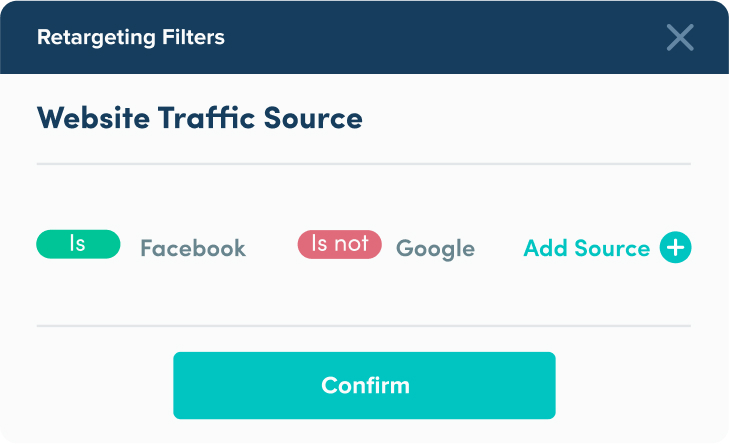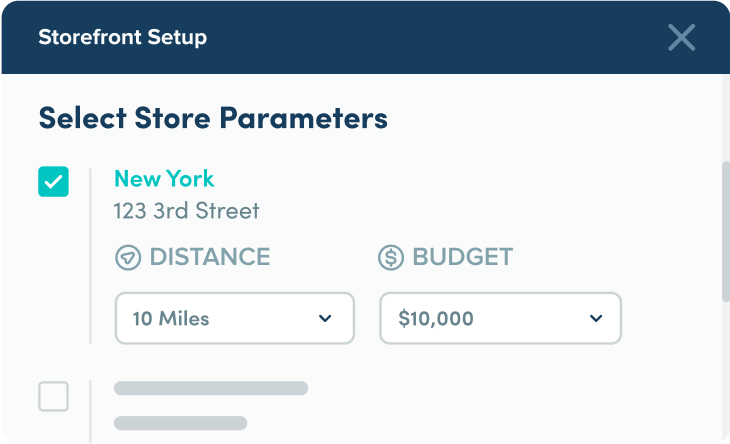The retailer reimagined direct mail to drive new customer growth, reactivation, and store traffic without increasing overhead
Key results:
- Generated 219% lift in revenue from two drops of a kitchen campaign
- Achieved 25% lift in revenue from a CRM-based Elfa audience
- 40% lift in reactivating lapsed customers who opted out of email marketing
“We did direct mail in such an antiquated way for years. Now it plays in the same space as digital with dashboards, lift metrics, and measurable results.”
—Jennifer Pereira, Director of Integrated Marketing at The Container Store
The Container Store has been a destination for storage and organization for decades, with over 100 stores across the country and more than 10,000 SKUs. As it expanded its marketing focus beyond general merchandise to its custom closet systems, the marketing team also expanded how it thought about customer engagement. That included a new approach to direct mail.
Jennifer Pereira, Director of Integrated Marketing, and Corinne Langer, Customer Analytics Manager, had a clear mission: make direct mail more strategic, more measurable, and more aligned with digital. For years, the company had mailed catalogs tied to in-store campaigns, with little insight into actual business impact. “We were spending a lot of money sending catalogs to people we were already talking to in other channels,” Pereira said.
The goal was to build a more responsive, performance-focused approach without increasing operational lift.
Reaching more of the right customers, with less effort
After years of treating direct mail as a slow, resource-heavy process, The Container Store’s marketing team wanted a new approach that didn’t depend on complex, multi-vendor workflows. The goal was to make the channel more nimble, data-driven, and integrated with their digital strategies. That started with rethinking audience selection. Instead of relying solely on CRM lists, the team tried lookalike models, interest-based triggers, and behavior signals to build smarter, more targeted campaigns.
They began with a simple test: could direct mail generate qualified leads for The Container Store’s high-value custom spaces business? Early campaigns showed clear promise, and the team quickly expanded its efforts to support reactivation, acquisition, and regional events. Instead of building and managing campaigns across multiple vendors, Pereira and Langer used Postie as a one-stop-shop to manage audience selection, mail execution, and measurement.
”Direct mail is oftentimes a lengthy, time consuming process” said Langer. “Now that we have Postie, we are able to get smarter with audience targeting without the time burden.”
The Container Store then started CRM segmentation, modeled audiences, and creative formats that aligned with key business goals. Results were both faster and clearer. “Doing our direct mail campaigns in Postie let us measure incrementality and ROAS, not just total sales,” said Pereira. “That changed the way we looked at the channel since we now have access to so much new data.”
The results:
Simplifying execution and introducing real-time performance visibility allowed The Container Store to scale its direct mail strategy without expanding its team. Trigger-based campaigns helped generate leads for the high-value custom spaces category, with mailers sent automatically to high-intent shoppers who hadn’t yet converted online. Instead of relying on static CRM lists or one-size-fits-all drops, the team could now test specific audiences, like recent website visitors or known closet buyers, with tailored messaging, formats, and timing.
That precision paid off in both output and efficiency. These early lead-gen campaigns have paved the way for broader efforts around reactivation and acquisition, enabling the team to move faster, measure more, and react in ways that legacy workflows never allowed.
To measure performance, the team structured every campaign with a matched control group to assess true sales lift. This ensures results reflected incremental value, not just total revenue. Segmentation was driven by both CRM data and modeled audiences using behavioral, purchase, and demographic criteria.
Campaigns that combine performance with purpose
As the team gained confidence in the new direct mail strategy, they began testing it as both a performance channel and a brand storytelling tool. The first major acquisition play was a two-wave trifold campaign focused on kitchen organization, which was an entry point category for many new customers. The mailers introduced The Container Store’s top products, best practices, and easy-to-adopt solutions. The creative emphasized usefulness over sales pitch: “How to set up your kitchen” rather than “Buy these three items.” It was designed to bring new customers into the ecosystem with value-first messaging.
That campaign was quickly followed by a product-specific test: a mailer promoting the Everything Organizer Collection, an expanded private-label offering positioned against competitor offerings. Rather than blast a generic audience, the team created two targeted segments from their CRM: plastic storage buyers and Elfa customers who hadn’t purchased the new product. The creative was tailored for each group, and results were tracked separately to understand which combination of message and audience would move the needle.
“These kinds of results helped us see the value in not just product promotion,” said Langer, “but in broader educational campaigns that reflect how we organize a space, not just sell an item.”
The results:
The kitchen campaign drove 219% lift in revenue. The new mover audience underperformed, but the core lookalike model based on high-LTV kitchen buyers was strong enough to validate the entire test. The success of this campaign led directly to a follow-up trifold focused on closet organization.
The Everything Organizer test delivered even more surprising results. The plastic audience saw a 23% lift in product sales but no incremental impact. In contrast, the Elfa audience drove a 32% lift in Elfa category sales and 25% lift in revenue. Though this audience wasn’t buying the featured product, the campaign still nudged them to shop in an adjacent category.
Reactivating customers and driving in-store traffic
While digital retargeting and email covered much of The Container Store’s active customer base, there remained a large group of lapsed customers the team couldn’t reach through traditional channels. Many had opted out of email or hadn’t engaged with digital ads. For Memorial Day, the team built a campaign targeting this segment using Postie, aiming to re-engage a large group that still held potential value. At the same time, the team explored using direct mail as an event promotion tool, specifically to support in-store remodels and local activations where driving foot traffic was the main KPI.
The format also proved effective at driving store visits. In June 2025, The Container Store remodeled six locations and hosted in-store events. Mailers supporting the events helped each store surpass its traffic and sales goals for the day.
“We needed people to walk in, see the changes, and connect with the new layout and signage,” said Pereira. “The mailers helped make that happen.”
The results:
The Memorial Day campaign mailed 250,000 lapsed CRM customers and outperformed the control group with a 40% lift in reactivated customers. The campaign demonstrated direct mail’s unique ability to reach unresponsive audiences that digital and email had left behind.
The in-store event campaign, launched in June 2025 across six remodeled stores, exceeded every foot traffic and sales goal. Each location surpassed the target of 125 attendees, and the promotion helped reintroduce customers to newly updated signage, layouts, and visual merchandising as part of a broader brand refresh. “We needed people to see and feel where we were going with the store,” said Jennifer Pereira. “This helped make it real.”
Building on what works, one category at a time
After success with the kitchen campaign, The Container Store expanded the approach to closet organization. The creative remained focused on education and brand introduction, positioning the store as an expert in how to build out each space. Future campaigns may explore storage, laundry, or other general merchandise categories where The Container Store sees strong new customer pull.
“We’re just scratching the surface,” said Pereira. “Most of our new customers start in kitchen or closet. That gives us a clear entry point and we’re learning how to make the most of it.”
As the team builds out this category-led strategy, they see Postie as a long-term partner not just for execution, but for experimentation. “We’re able to test, learn, and scale in a way that fits our bandwidth and business goals,” said Langer. With new audiences to reach and new formats to explore, The Container Store is mailing smarter and building a playbook for growth, one campaign at a time.
219%
Lift in Revenue
40%
Lift in Customer Reactivation
32%
Lift in Elfa Category Sales






